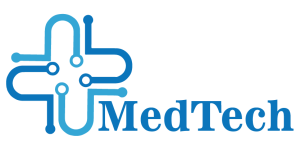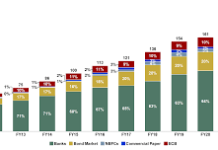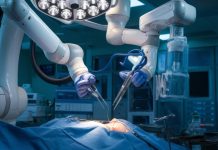In an exciting move, BD (Becton Dickinson) has outlined plans to separate its biosciences and diagnostics business to fuel future investments in high-growth MedTech areas. During a recent earnings call, BD CEO Tom Polen shared how this split will create opportunities to accelerate the company’s focus on its high-growth interventional segment, with aims to expand and innovate in key medical fields.
Let’s break down what this separation means for BD’s MedTech growth trajectory and the potential market opportunities it could unlock.
Separation Plan: Shaping BD’s MedTech Future
BD’s announcement on Thursday unveiled its strategy for a major organizational shift: splitting the biosciences and diagnostics business from its MedTech division. This bold move aligns with the company’s vision to strategically invest in areas poised for high growth, like interventional medicine and medical essentials.
Polen highlighted the tremendous potential for BD’s interventional segment, noting that it’s positioned to capitalize on a number of promising market opportunities. This decision follows a significant financial performance report, showing that BD’s biosciences and diagnostics unit generated $3.4 billion in revenue during its 2024 fiscal year, with the diagnostics arm contributing $1.8 billion.
A Look at BD’s MedTech Business
The remaining MedTech division, which generated $17.8 billion in revenue in BD’s last financial year, is home to the company’s two largest sectors: medical essentials and interventional medicine.
Together, these units account for $6.2 billion and $5 billion in revenue, respectively. BD’s plan to double down on interventional, a field with significant growth potential, is expected to drive the company’s future MedTech growth.
J.P. Morgan analysts, while acknowledging the solid assets BD holds in interventional, also emphasized the importance of building a strategy that accelerates growth within high-potential supply markets and early-stage assets.
Their analysis suggests that BD’s MedTech business should expand its reach and acquire innovative technologies to better leverage existing platforms like cardio and urology.
Investment Focus – Accelerating Growth Post-Split
BD plans to increase investments in MedTech and biosciences businesses post-separation, focusing on “tuck-in” acquisitions to grow organically and inorganically, particularly in high-margin areas. This strategy aims to maintain a competitive advantage in interventional medicine, which is expected to remain a central focus.
Polen also shared that the separated biosciences and diagnostics business would have more flexibility in capital deployment. Historically, BD has focused nearly all of its acquisition spending—99.5%—on its MedTech operations.
The shift will allow BD to explore new areas such as infectious diseases and cancer screening, sectors where BD has yet to make significant capital investments.
Potential Impact on BD’s Market Position
The planned separation, expected to be completed in fiscal 2026, is a strategic response to the growing need for focus in a rapidly changing healthcare landscape. BD’s approach is driven by the need to streamline operations and better address market opportunities within MedTech.
The decision to spin off BD into a healthcare company faces risks due to its complexity and the need for a smooth transition to maintain stakeholder value. William Blair analysts highlight mixed success rates, while J.P. Morgan analysts see the decision as rational given the current business environment.
The Future of BD: MedTech as the Core Growth Engine
As BD moves forward with its separation plan, all eyes will be on how it reshapes its MedTech portfolio. The company is committed to leveraging its core interventional segment while exploring new opportunities for growth.
With a clear focus on innovative acquisitions and capitalizing on high-growth markets, BD is setting the stage for a transformative 2025.
BD’s strategic separation of biosciences and diagnostics business allows for more strategic investment direction, positioning it as a key player in the global MedTech landscape. The split’s impact on interventional and high-growth segments will be intriguing.
What’s Next for BD?
BD has not yet decided whether it will sell, spin off, or pursue a Reverse Morris Trust (RMT) to separate its biosciences and diagnostics business. As the company prepares for a potential deal in fiscal 2026, market watchers will be keen to see how this bold decision unfolds and what opportunities arise from the split.
In conclusion, BD’s separation plan is set to redefine its market approach, with a clear emphasis on high-growth MedTech segments. The focus on interventional medicine and infectious disease areas reflects the company’s commitment to innovation and leadership in the healthcare industry. With this separation, BD is positioning itself for a future driven by targeted investments and strategic growth.
I hope you find the above content helpful. For more such informative content, please visit Medtechreporter.











